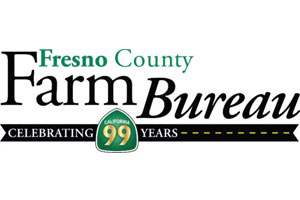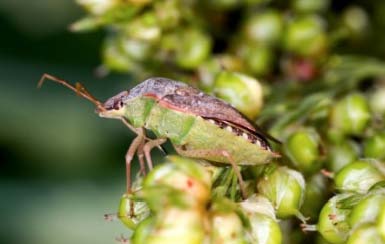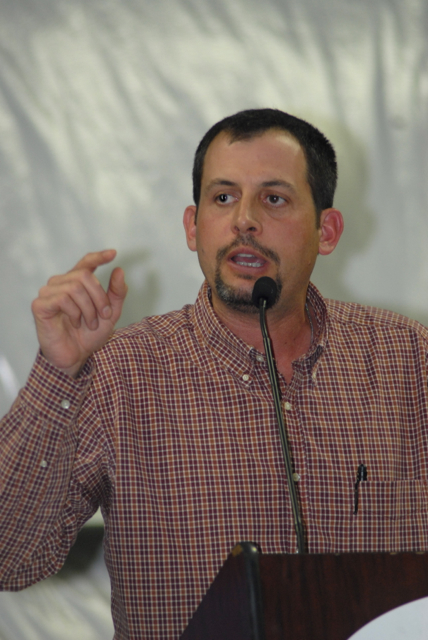Julie Borlaug Honors her Famous Grandfather
Julie Borlaug Honors her Famous Grandfather, Norman Borlaug, in Advancing Science in Agriculture
Editor’s Note: Julie Borlaug spoke recently at the 2016 Forbes AgTech Summit in Salinas, and shared with us the legacy of her Grandfather, Norman Ernest Borlaug, a man who used technology to ward off starvation and the recipient of the Nobel Peace Prize, the Medal of Freedom, the Congressional Gold Medal, as well as the importance of advanced technology in Agriculture.
Julie Borlaug, associate director for external relations, Norman Borlaug Institute for International Agriculture at Texas A&M University, introduced the Institute’s mission, “We design and implement development and training programs. We take the legacy of my grandfather and we carry it out through the land-grant mission of teaching, research and extension. We’re primarily funded by organizations like USAID and USDA, so we truly are a development agency.”
Here is more of what she shared:
Norman Borlaug
We all know why we care about agriculture and a lot of why we care is pretty much some of the same reasons my grandfather was up against during the green revolution. My grandfather was the recipient of the Nobel Peace Prize, the Medal of Freedom, the Congressional Gold Medal and now a statue in the National Statuary Hall at the U.S. Capitol. However, when I speak about my grandfather I like to humanize him a little and make people realize he was a normal person and that anyone can, if they’re dedicated, change the world.
Growing up with him, we didn’t really know what he did. We just knew he flew through Dallas on his way to Mexico or Africa or India. In third grade, I took him to show and tell, and he was upstaged by a hamster. I think it was good for him.
When he got the Congressional Gold Medal I got to sit with him on stage and he had two minutes to talk. The entire Congress was shut down. At 10 minutes, Nancy Pelosi‘s staff [was] poking me from behind saying, “You’ve got to stop him.” I leaned forward to President Bush and I said, “They want him to stop. You’re the President.” He said, “This isn’t my thing, this is the Congressional.” Right at that point, I think we were about 18 minutes in, my grandfather said, “Poverty and hunger are fertile seeds for isms, and terrorism is one of them.” At that point Bush leaned back and said, “Don’t stop him now.”

President George W. Bush Presents Congressional Gold Medal to Dr. Norman Borlaug. Also pictured is House Majority Leader Steny Hoyer, left, and Speaker of the House Nancy Pelosi. (Source: White House photo by Chris Greenberg)
My grandfather was many things. He was a warrior against hunger, he was a teacher, but first and foremost he was a scientist. He often said, “The fear of change is the greatest obstacle to progress.” He came down on the side of innovation and was known to be bold and quick.
He was a fierce advocate for innovation and technological change, especially when it came to developing countries and small-scale farmers. His most potent view of science was that man’s most advanced knowledge and technology should be used in the battle against hunger and poverty.
Like my grandfather’s green revolution, we have a huge challenge in front of us: How to feed 9 billion people. This is going to require new economic, political policies, new rounds of innovation, of technological advancements, but most importantly in agriculture, it will require a new way of agriculture to address things.
Transformation
We have to change our thinking, we have to have new partners and we can’t be the traditional Ag and take a silo approach. We have to be interconnected, transformative, with greater transparency and we need to bring the life science technology entrepreneurs—everyone, even the medical community—to the table.
That’s one of the reasons why my grandfather’s green revolution was so successful. He realized he had to bring the government, economic infrastructure and technology together for the small-holder farmer for it truly to work, because agriculture alone cannot transform.
Like my grandfather, I strongly believe in biotechnology and innovation. I always get asked, “Can we feed 9 billion people?” My answer is yes, if we are allowed to. If my grandfather were here he’d say, “We are not going to be able to do this without science and without pushing the boundaries of innovation.”
To feed 9 billion we need to realize we have a new strain of fact-resistant humans and we have a lack of transparency, that’s all you can call them. I could call them something else, but that’s the most polite way.
Consumer Confusion
We need to realize that our consumer is very different. We have mommy bloggers, we have foodies driving the conversation and the table is moving closer to the farm. We have all the misconceptions; a backyard garden is not farming.
Pretty backyard gardens with chickens running around is not going to feed the world. It takes more than that and we have a public who thinks that’s what it is. I always ask those people, if they want to go see reality, come with me to rural Kenya and let’s ask a female farmer what she needs. It’s seeds, inputs and technology.
We also have market confusion. We have vegan green beans, we have gluten-free cranberries, we have GMO-free beef. I was at an opening of Whole Foods a few years ago and there was a North Texas cattle company that was showing GMO-free beef and I had to walk over and ask what he meant. He said, “We do not genetically modify our cattle.” I said, “Well, of course you don’t. Do you mean you’re not giving feed that has been genetically modified?” He said, “No, no, no, we do that. We just don’t genetically modify our cattle.” It was great marketing.

Julie Borlaug, associate director for external relations, Norman Borlaug Institute for International Agriculture at Texas A&M University
We had GMO-free salt that sold at stores. I like that one. We have a public that believes everything on social media, especially what their 20-year-old yoga instructor says, who got a degree in nutrition online. We also have fear campaigns; look at what Greenpeace has done.
You cannot be anti-hunger and anti-innovation. If you are going to be anti-innovation, you better have a solution for us because we’re willing to accept it.
Innovation and NextGen
What’s really [fascinating] is where my grandfather would be excited about the future of Agriculture. My grandfather would be most excited about the gene revolution. We have gene-editing and synthetic biology. There are so many new solutions out there. We have a sharing economy, internet of everything, cloud biology, MachineryLink—something I’m involved in. It’s an uber platform for sharing of equipment.
In order to really get to my grandfather’s legacy, we have to remember that we are responsible for the next generation. We have to build the hunger-fighters that my grandfather built. The next generation is growing up with technology, they’re creative, they have bold ideas, they collaborate across discipline and they want change. We need to bring them to the table and support them.
When my grandfather got the Nobel Peace Prize, the Chair said, “Behind the outstanding results in the sphere of wheat research for which the dry statistics speak, we sense the presence of a dynamic, indomitable and refreshingly unconventional research scientist. We still need more of those today. It’s going to be unconventional partnerships and innovations that help us end hunger. Just remember, if we don’t allow it to happen here, if we try to ban the future of agriculture and innovation, it’s just going to happen somewhere else, and I think we want that to happen here.”
If my grandfather was here he would thank you for your dedication and he’d tell you to move faster, because there are 25,000 people who are going to die today while we’re debating future technologies. I think we need to always remember that.
Before he died he said he had a problem. This was when he was told he was going to pass away, and it was 3 days before he died. My mom and I asked what his problem was and he said it was Africa. “I never brought a green revolution to Africa.”
I quickly said, “All the hunger-fighters, everyone you’ve trained, everyone in this room is going to ensure we bring a green revolution to Africa that’s appropriate for each country and each area, and we will do that everywhere.” That is what you’re doing, but remember, your innovation and technology is only good when you take it to the farmer.




























